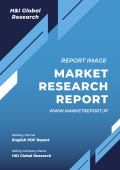Table of Contents
Chapter 1. Methodology and Scope
1.1. Market Segmentation & Scope
1.2. Market Definitions
1.2.1. Information Analysis
1.2.2. Market Platform & Data Visualization
1.2.3. Data Validation & Publishing
1.3. Research Assumptions
1.4. Information Procurement
1.4.1. Primary Research
1.5. Information or Data Analysis
1.6. Market Platform & Validation
1.7. Market Model
1.8. Global Market: CAGR Calculation
1.9. Objectives
1.9.1. Objective 1
1.9.2. Objective 2
Chapter 2. Executive Summary
2.1. Market Snapshot
2.2. Segment Snapshot
2.3. Competitive Landscape Snapshot
Chapter 3. Market Variables, Trends, & Scope
3.1. Market Lineage Outlook
3.1.1. Parent Market Outlook
3.1.2. Related/Ancillary Market Outlook
3.2. Market Dynamics
3.2.1. Market Driver Analysis
3.2.1.1. Growing focus on cell reprogramming
3.2.1.2. Increasing adoption of cell reprogramming in cancer research
3.2.1.3. Emphasis on collaborations and partnerships among key players
3.2.2. Market Restraint Analysis
3.2.2.1. Challenges associated with iPSCs
3.2.2.2. Limited awareness regarding treatment option
3.3. Industry Analysis Tools
3.3.1. Porter’s Five Forces Analysis
3.3.2. PESTEL Analysis
3.3.3. COVID-19 Impact Analysis
Chapter 4. Technology Business Analysis
4.1. Cell Reprogramming Market: Technology Movement Analysis
4.2. Sendai Virus-based Reprogramming
4.2.1. Sendai Virus-based Reprogramming Market, 2018 – 2030 (USD Million)
4.3. mRNA Reprogramming
4.3.1. mRNA Reprogramming Market, 2018 – 2030 (USD Million)
4.4. Episomal Reprogramming
4.4.1. Episomal Reprogramming Market, 2018 – 2030 (USD Million)
4.5. Others
4.5.1. Others Reprogramming Market, 2018 – 2030 (USD Million)
Chapter 5. Application Business Analysis
5.1. Cell Reprogramming Market: Application Movement Analysis
5.2. Research
5.2.1. Research Market, 2018 – 2030 (USD Million)
5.3. Therapeutics
5.3.1. Therapeutics Market, 2018 – 2030 (USD Million)
Chapter 6. End-use Business Analysis
6.1. Cell Reprogramming Market: End-use Movement Analysis
6.2. Research & Academic Institutes
6.2.1. Research & Academic Institutes Market, 2018 – 2030 (USD Million)
6.3. Biotechnology & Pharmaceutical Companies
6.3.1. Biotechnology & Pharmaceutical Companies Market, 2018 – 2030 (USD Million)
Chapter 7. Regional Business Analysis
7.1. Cell Reprogramming Market Share By Region, 2022 & 2030
7.2. North America
7.2.1. North America Cell Reprogramming Market, 2018 – 2030 (USD Million)
7.2.2. U.S.
7.2.2.1. Key Country Dynamics
7.2.2.2. Competitive Scenario
7.2.2.3. U.S. Cell Reprogramming Market, 2018 – 2030 (USD Million)
7.2.3. Canada
7.2.3.1. Key Country Dynamics
7.2.3.2. Competitive Scenario
7.2.3.3. Canada Cell Reprogramming Market, 2018 – 2030 (USD Million)
7.3. Europe
7.3.1. Europe Cell Reprogramming Market, 2018 – 2030 (USD Million)
7.3.2. UK
7.3.2.1. Key Country Dynamics
7.3.2.2. Competitive Scenario
7.3.2.3. UK Cell Reprogramming Market, 2018 – 2030 (USD Million)
7.3.3. Germany
7.3.3.1. Key Country Dynamics
7.3.3.2. Competitive Scenario
7.3.3.3. Germany Cell Reprogramming Market, 2018 – 2030 (USD Million)
7.3.4. France
7.3.4.1. Key Country Dynamics
7.3.4.2. Competitive Scenario
7.3.4.3. France Cell Reprogramming Market, 2018 – 2030 (USD Million)
7.3.5. Italy
7.3.5.1. Key Country Dynamics
7.3.5.2. Competitive Scenario
7.3.5.3. Italy Cell Reprogramming Market, 2018 – 2030 (USD Million)
7.3.6. Spain
7.3.6.1. Key Country Dynamics
7.3.6.2. Competitive Scenario
7.3.6.3. Spain Cell Reprogramming Market, 2018 – 2030 (USD Million)
7.3.7. Denmark
7.3.7.1. Key Country Dynamics
7.3.7.2. Competitive Scenario
7.3.7.3. Denmark Cell Reprogramming Market, 2018 – 2030 (USD Million)
7.3.8. Sweden
7.3.8.1. Key Country Dynamics
7.3.8.2. Competitive Scenario
7.3.8.3. Sweden Cell Reprogramming Market, 2018 – 2030 (USD Million)
7.3.9. Norway
7.3.9.1. Key Country Dynamics
7.3.9.2. Competitive Scenario
7.3.9.3. Norway Cell Reprogramming Market, 2018 – 2030 (USD Million)
7.4. Asia Pacific
7.4.1. Asia Pacific Cell Reprogramming Market, 2018 – 2030 (USD Million)
7.4.2. Japan
7.4.2.1. Key Country Dynamics
7.4.2.2. Competitive Scenario
7.4.2.3. Japan Cell Reprogramming Market, 2018 – 2030 (USD Million)
7.4.3. China
7.4.3.1. Key Country Dynamics
7.4.3.2. Competitive Scenario
7.4.3.3. China Cell Reprogramming Market, 2018 – 2030 (USD Million)
7.4.4. India
7.4.4.1. Key Country Dynamics
7.4.4.2. Competitive Scenario
7.4.4.3. India Cell Reprogramming Market, 2018 – 2030 (USD Million)
7.4.5. Australia
7.4.5.1. Key Country Dynamics
7.4.5.2. Competitive Scenario
7.4.5.3. Australia Cell Reprogramming Market, 2018 – 2030 (USD Million)
7.4.6. Thailand
7.4.6.1. Key Country Dynamics
7.4.6.2. Competitive Scenario
7.4.6.3. Thailand Cell Reprogramming Market, 2018 – 2030 (USD Million)
7.4.7. South Korea
7.4.7.1. Key Country Dynamics
7.4.7.2. Competitive Scenario
7.4.7.3. South Korea Cell Reprogramming Market, 2018 – 2030 (USD Million)
7.5. Latin America
7.5.1. Latin America Cell Reprogramming Market, 2018 – 2030 (USD Million)
7.5.2. Brazil
7.5.2.1. Key Country Dynamics
7.5.2.2. Competitive Scenario
7.5.2.3. Brazil Cell Reprogramming Market, 2018 – 2030 (USD Million)
7.5.3. Mexico
7.5.3.1. Key Country Dynamics
7.5.3.2. Competitive Scenario
7.5.3.3. Mexico Cell Reprogramming Market, 2018 – 2030 (USD Million)
7.5.4. Argentina
7.5.4.1. Key Country Dynamics
7.5.4.2. Competitive Scenario
7.5.4.3. Argentina Cell Reprogramming Market, 2018 – 2030 (USD Million)
7.6. MEA
7.6.1. MEA Cell Reprogramming Market, 2018 – 2030 (USD Million)
7.6.2. South Africa
7.6.2.1. Key Country Dynamics
7.6.2.2. Competitive Scenario
7.6.2.3. South Africa Cell Reprogramming Market, 2018 – 2030 (USD Million)
7.6.3. Saudi Arabia
7.6.3.1. Key Country Dynamics
7.6.3.2. Competitive Scenario
7.6.3.3. Saudi Arabia Cell Reprogramming Market, 2018 – 2030 (USD Million)
7.6.4. UAE
7.6.4.1. Key Country Dynamics
7.6.4.2. Competitive Scenario
7.6.4.3. UAE Cell Reprogramming Market, 2018 – 2030 (USD Million)
7.6.5. Kuwait
7.6.5.1. Key Country Dynamics
7.6.5.2. Competitive Scenario
7.6.5.3. Kuwait Cell Reprogramming Market, 2018 – 2030 (USD Million)
Chapter 8. Competitive Landscape
8.1. Company Categorization
8.2. Strategy Mapping
8.3. Company Market Position Analysis, 2022
8.4. Company Profiles/Listing
8.4.1. Thermo Fisher Scientific, Inc.
8.4.1.1. Overview
8.4.1.2. Financial Performance
8.4.1.3. Product Benchmarking
8.4.1.4. Strategic Initiatives
8.4.2. Allele Biotech
8.4.2.1. Overview
8.4.2.2. Financial Performance
8.4.2.3. Product Benchmarking
8.4.2.4. Strategic Initiatives
8.4.3. ALSTEM
8.4.3.1. Overview
8.4.3.2. Financial Performance
8.4.3.3. Product Benchmarking
8.4.3.4. Strategic Initiatives
8.4.4. STEMCELL Technologies Inc.
8.4.4.1. Overview
8.4.4.2. Financial Performance
8.4.4.3. Product Benchmarking
8.4.4.4. Strategic Initiatives
8.4.5. Merck KGaA
8.4.5.1. Overview
8.4.5.2. Financial Performance
8.4.5.3. Product Benchmarking
8.4.5.4. Strategic Initiatives
8.4.6. Bio-Techne
8.4.6.1. Overview
8.4.6.2. Financial Performance
8.4.6.3. Product Benchmarking
8.4.6.4. Strategic Initiatives
8.4.7. REPROCELL
8.4.7.1. Overview
8.4.7.2. Financial Performance
8.4.7.3. Product Benchmarking
8.4.7.4. Strategic Initiatives
8.4.8. Lonza
8.4.8.1. Overview
8.4.8.2. Financial Performance
8.4.8.3. Product Benchmarking
8.4.8.4. Strategic Initiatives
8.4.9. FUJIFILM Corporation (Fujifilm Cellular Dynamics)
8.4.9.1. Overview
8.4.9.2. Financial Performance
8.4.9.3. Product Benchmarking
8.4.9.4. Strategic Initiatives
8.4.10. Mogrify Limited
8.4.10.1. Overview
8.4.10.2. Financial Performance
8.4.10.3. Product Benchmarking
8.4.10.4. Strategic Initiatives
*** 免責事項 ***
https://www.globalresearch.co.jp/disclaimer/











